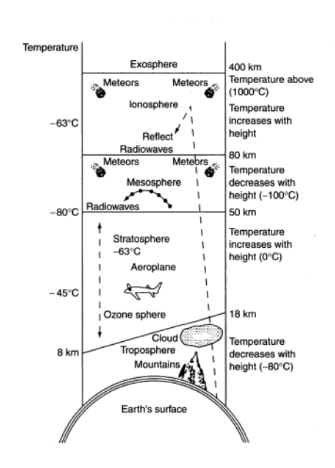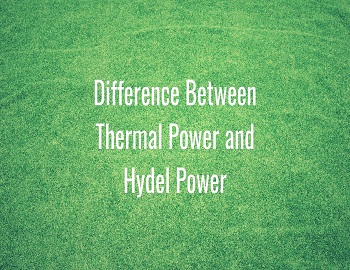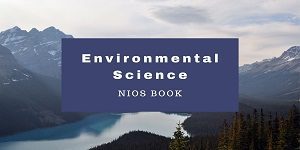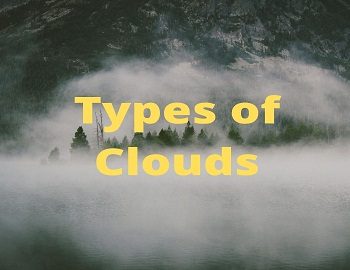Table of Contents
Atmosphere and its Structure:
- Our earth is surrounded by a vast envelope of air known as the Atmosphere.
- It is held to the earth’s surface by its gravity.
- The air is composed of tiny molecules of gases.
- A molecule is the smallest particle of a substance.
- These molecules move randomly in all directions in the air.
- The number of molecules present in a unit/volume determines the density of air.
- The number of molecules present in the air is very high near the surface of the earth. Therefore, the density of the atmosphere is high near the surface.
- As we go high up in the atmosphere, the molecules are spread farther apart.
- The air, therefore, become rarer.
Four major Gases of Atmosphere:
- Nitrogen – 78.1%
- Oxygen- 20.9%
- Argon- 0.93%
- Carbon- 0.03%
Structure of the Atmosphere:
The atmosphere is an integral part of the earth.
It surrounds the earth from all sides.
Generally it extends upto about 1600 kilometres from the earths surface.
97 percent of the total amount of weight of the atmosphere is limited upto the height of about 30 kilometres.
The atmosphere can be divided into five layers according to the diversity of temperature and density.

Troposphere:
- The term ‘troposphere‘ literally means ‘turns over‘ referring to stormy and rainy weather conditions that occur here.
- It is the first layer from the earth’s surface and more than 95% of atmospheric mass contains here in this layer.
- It extends to a height of 8 km near the poles and 18 km at the equator.
- It is thicker at the equator as it gets warm due to contact with the earth’s surface.
- The gases expand and transport the heat by strong conventional currents.
- Nearly all climatic phenomenon known to us is confined in this layer and most important layer as far as life on earth is concerned.
- Temperature decreases with height at the rate of 6.5°c/km and is called as Normal Lapse Rate.
- Jet planes avoid flying in this layer because of the presence of bumpy air pockets and prefer flying in stratosphere.
Stratosphere:
- The boundary separating the troposphere from the stratosphere is called the tropopause, which is about 1.5m thick.
- The temperature at tropopause above the equator is -80°c and -45°c above the poles respectively.
- The most important feature of this layer is the presence of the Ozone layer between the altitude 30-50 km’s above the surface and is called as Ozonosphere.
- This layer filters U-V radiation from the Sun’s spectrum because of which temperature rises and which reaches 0°c at stratopause i.e transitional boundary between stratosphere and mesosphere.
Mesosphere:
- Many meteorologist do not consider it to be a separate layer rather takes it to be a transitional boundary between the ozonosphere and the ionosphere which lies within the thermosphere.
- Temperature once again decreases with height and it becomes -100°c at mesopause i.e transitional boundary between mesosphere and thermosphere.
- Luminous noctilucent clouds form due to the presence of cosmic dust.
- Meteors falling from the outer space burn in this layer due to friction and the presence of some oxygen.
Thermosphere:
- It lies between the altitude of 80 km and 400 km and the most important feature of this layer is the presence of gases in their ionized state after absorbing high-intensity X-rays, γ-rays, and other short waves U-V radiations.
- This leads to the electrical conductivity of this layer because of flow of free electrons which is responsible for radio communication possible on the earth’s surface because it reflects radio waves back to the earth’s surface.
- Temperature once again rises with height which reaches more than 1000°c at thermopause.
Exosphere:
- The uppermost layer of the atmosphere extends into the outer space from above 400km-1600km and has extremely rarefied contents.
- Very little is known about it.
- Temperature increase here with altitude and range as high as 1650°c.
- The gravitational pull is minimal in this layer.
Important Terms:
- Solar Radiation: The sun is the main source of heat for our planet- earth. It constantly radiates (gives out) light and heat in all directions. This is called Solar Radiations.
- Insolation: The amount of solar radiation received by the earth is called insolation (incoming solar radiation).
- Temperature: The degree of hotness or coldness of the air is known as temperature. The standard unit of measuring temperature is degrees Celcius (°C). The instrument used to measure temperature is called thermometer.
- Wind: Horizontal movement of air near the earth’s surface.
- Torrid or Tropical Zone: The zone between 23° 30′ North and 23° 30′ South latitudes is known as the Torrid or Tropical zone. The apparent movement of the sun during a year is between these two latitudes. As a result, the sun’s rays are almost vertical in this zone throughout the year. Hence, this zone receives maximum insolation and is very hot.
- Frigid Zones: The zones between 66° 30′ North latitude and the North Pole and 66° 30′ South latitude and the South Pole receive minimum insolation. They are, therefore, very cold. These are known as the Frigid Zones.
- Temperate Zones: The areas between the torrid zone, on the one hand, and the frigid zone on the other, have moderate temperature i.e. they are neither too hot nor too cold. They are called Temperate Zones.
- From the above, it is clear that the temperature of the air decreases with an increase in latitude.
- The temperature of air also decreases with height or altitude.
- Another factor influencing temperature is the distance of a place from the sea. Since water heats or cools slowly compared to the landmass, the air above it also gets influenced in the same manner. As such, during summer when land gets heated, the air above it also gets heated and rises. In contrast, the air above the water is cooler and denser. It, therefore, moves towards the land and brings a cooling effect on the land near the sea. Thus there is very little difference between summer and winter temperatures in places near the sea. Such places, having equable temperature, are said to have Maritime Climate. On the other hand, there is a greater difference in summer and winter temperatures places in the interior of a landmass. Such places having extremes of temperature are said to have Continental Climate.
- Albedo: This is the amount of insolation reflected by the body. Earth’s albedo is ~ 30-35%. In tropics, it is as low as 20-40% and in poles, it reaches 80%. When the sun is overhead albedo is less.
Ozone Hole:
- Ozone (O3) is a form of oxygen that combines three oxygen atoms into each molecule.
- Ozone is known as a chemical weed because like a weed it is harmful in the troposphere and quite useful in the stratosphere.
- It is created when ultraviolet light splits an oxygen molecule into single atoms and each of these then combines after collision with an oxygen molecule.
- The amount of atmospheric ozone is measured by ‘Dobson Spectrometer‘ and is expressed in Dobson units (DU).
- The Antarctic ozone hole (thinning of the ozone layer or depletion of the ozone layer) was discovered by Dr. Joe C.Farman and his colleagues in the British Antarctic Survey who had been recording ozone levels over this region since 1957. The ozone hole was first discovered over Antarctica in 1985.
- Chlorofluorocarbons (CFC) are mainly responsible for ozone depletion in the stratosphere.
- CFCs are a group of synthetic chemicals first discovered by Thomas Midgley.
- CFCs are used as coolants in refrigerators and air conditioners.
- Nitrous oxide (N₂O, also called laughing gas) emitted by supersonic aircraft during the combustion of fossil fuel, and the use of nitrogen fertilizers also depletes the ozone layer.
- Ozone depletion results in more UV radiation which causes skin cancer, an increase in incidents of cataract (eye disease), destroys melanin-producing cells of the epidermis (skin).
- In plants, photosynthetic chemicals will be affected and therefore photosynthesis will be inhibited. Decreased photosynthesis will result in increased atmospheric CO2 resulting in global warming and also a shortage of food leading to the food crisis.
- Due to ozone reduction, intense UV radiation causes greater evaporation of surface water through the stomata of the leaves and decreases the soil moisture content.
- More larvae and young ones of aquatic animals will die. The productivity of the aquatic ecosystem is going to decrease by 6-22%.
- An increase in temperature changes the climate and rainfall pattern which may result in flood/drought, seawater rise, imbalance in ecosystems affecting flora, and fauna.









Comments (No)